The Future of Forex: How to Navigate the Asian Landscape for Maximum Profit
After Bear Stearns (the 5th largest investment bank in the US at the time) was sold to JP Morgan in March 2008, the chips fell quickly. On 14 September 2008, Bank of America announced that it was buying Merrill Lynch in an all-stock deal worth USD50 billion. On 15 September 2008, Lehman Brothers ?led for bankruptcy.
On 16 September 2008, the Federal Reserve announced that it would provide an emergency loan to the tune of USD85 billion to rescue the huge insurer AIG. On 29 September 2008, the Dow plummeted 777.68 points – its biggest one-day point drop in history – to close down 7 percent at 10365.45.
All this in just two weeks.
Before the world could adequately recover from the credit crisis, the eurozone crisis erupted.
In May 2010, Greece accepted a 110 billion euros bailout deal from the European Central Bank, the European Commission and the International Monetary Fund. Ireland became the next victim in November of the same year with a bailout deal worth 85 billon euros. The next three years saw Portugal, Spain and Cyprus needing help.
Where is the opportunity for the retail trader and investor against a backdrop of uncertainty? The answer, is the Forex Market. In September 2016, the Bank for International Settlements (BIS) reported that the global Forex volume came in at 5.1 trillion US dollars a day. The previous report, conducted 3 years earlier in 2013, reported that the total Forex volume peaked at 5.3 trillion US dollars a day.
I was initially puzzled that the report saw a drop in Forex volume from 2013 to 2016. Digging further, I realised there was more to it than meets the eye. Here’s the determining factor: from 2013 to 2016, the US dollar actually strengthened 16% over its counterparts. Now, the USD0.2 trillion “loss” from USD5.3 trillion to USD5.1 trillion is “only” a 3.7% drop. So if you put that data into context – while volume may have seemed to have dropped, the real reason was the strengthening of the US dollar.
Compared to 2013, the share of the US dollar increased to 88 percent, which is higher by one percentage point. The euro remained in second spot with 31 percent, but declined by two percentage points. This marked a continued decline for the single European currency after it peaked at 39 percent in 2010.
Here comes the biggest question – what does all this data mean for Asia? Let’s look at 3 key themes:
1) Asian Market Share
According to the survey results, global ?nancial centres continued dominating the market in terms of market share – the top ?ve were unchanged with the United Kingdom, the United States, Singapore, Hong Kong and Japan accounting for 77 percent of global foreign exchange trading. The ?gure was higher from 75 percent in April 2013 and 71 percent in April 2010. Here’s an important distinction – 3 out of the top 5 spots belonged to Asia.
Singapore remained as the largest foreign exchange centre in the Asia-Paci?c region and third largest globally after London and New York. The average daily trading volume of Singapore’s FX market was USD517 billion in April 2016, up 35% from USD383 billion in April 2013. Singapore’s share of global FX volumes had grown from 5.7% in 2013 to 7.9% in 2016.
Foreign exchange swaps made up the largest traded foreign exchange product class in Singapore and accounted for 48% of all trades, followed by spot FX (24%) and FX forwards (20%).
The expansion in Singapore’s FX market was chie?y driven by growth in G-10 and Asian currencies. The currencies which increased the most included the yuan (78 per cent), yen (67 per cent), sterling (60 per cent) and South Korean won (55 per cent). G-10 currencies are the most heavily traded currencies in the world. They are the US dollar, euro, yen, sterling, Swiss franc, Australian dollar, New Zealand dollar, Canadian dollar, Swedish krona and Norwegian krone.
2) China and the Yuan
The BIS survey highlighted the rise of emerging market currencies as it noted that the Chinese yuan had doubled since 2013 to about 4 per cent with an average turnover of USD202 billion daily in April 2016. That volume put the Chinese Yuan in 8th spot amongst the most actively traded currencies in the world. This is an improvement compared to 2013, when the Chinese Yuan came in at 9th spot just ahead of the New Zealand Kiwi.
In October 2016, the yuan was o?cially included into the International Monetary Fund’s (IMF) basket of reserve currencies, joining the US dollar, the euro, the yen, and the British pound.
The inclusion was a milestone in the internationalisation of the Yuan, and is the ?rst inclusion since the euro in 1999. Among other bene?ts, the inclusion means China needs to hold less foreign reserves for the purpose of international credit.
Yuan trading has also expanded further because the currency has gained acceptance as a payment currency. The yuan was the ?fth most active currency for global payments in July 2016, according to global transaction service provider Swift.
China’s foreign exchange reserves rose to their highest in more than a year in December 2017, blowing economists’ estimates, as tight regulations and a strong yuan continued to discourage capital outflows. Notching up their 11th straight month of gains, reserves rose USD20.2 billion in December 2017 to USD3.14 trillion, the highest since September 2016. In the whole of 2017, the yuan gained 10% on the US dollar.
At the same time, a persistently sluggish domestic economy is encouraging a ?ight of funds in search of more remunerative investments abroad. Aware of the danger, China has tightened its measures to stop the outflow of capital, in particular by restricting many investments abroad considered doubtful. Ironically, this has brought a lot of attention on the Forex side of things, causing an uptick in the number of retail traders in China who have opened accounts with international brokers.
3) Regulation
Towards the end of 2016, a lot of regulatory changes (primarily in Europe) made headlines. The Cyprus regulator CySEC announced a ban on bonus payments by brokers to retail clients and limited the amount of leverage a brokerage could offer. CySEC’s move was followed by a similar proposal by the UK regulator FCA.
Additionally, Israel and Russia has announced that Forex brokers need to obtain a license before officially on-boarding retail traders. On 3rd January 2018, another rule came into play. Markets in Financial Instruments Directive II – commonly referred to as MiFID II – took effect. It’s essentially a wave of sweeping regulation that will affect the equities, bonds, commodities and derivative markets across the whole of the European Union (EU).
These regulatory moves will essentially have two effects on the Forex industry as a whole:
1) Brokers will start targeting clients in jurisdictions where regulation is not as strict. This includes some parts of Asia.
2) There will be a surge in brokers looking for more flexible jurisdictions to get licensed. This includes countries like Saint Vincent & the Grenadines and Seychelles.
Three Emerging Trends in Asia
As we look ahead to the next 10 years, there will be 3 dominant trends in Asia:
1) Cryptocurrencies
Usage of cryptocurrencies have been booming over the years. With Bitcoin having been around since 2008, the knowledge and understanding around digital payments has also surged. Bitcoin surged 120% in 2016, but exploded in 2017, surging a whopping 1,300% in the entire year. In July 2018, Blackrock – one of the world’s largest investment management corporations, announced that they have set up a working group to explore ways of taking advantage of the cryptocurrency market.
2) Copy Trading
One of the highlights in the retail world over the years has been that of copy trading. Copy trading allows traders and investors to trade online with the help of others. It shortens the learning curve because traders can duplicate their trades from top performers and save precious time. Investors also have the flexibility of selecting their desired risk.
3) FX Blockchain
Using cryptography to keep exchanges secure, blockchain provides a decentralised database or “digital ledger”, of transactions that everyone on the network can see. This network is essentially a chain of computers that must all approve an exchange before it can be veri?ed and recorded.
Recently, some big names like Goldman Sachs and Mastercard patented some of the most promising blockchain technologies for themselves. Looking ahead, FX Blockchain will become a mainstay. Companies like Cobalt DL, Lykke and FXCH have started this journey. Some of the bene?ts of FX Blockchain include greater transparency, lower costs and faster execution.
As legendary ice hockey champion Wayne Gretzky said, “I don’t go to where the puck is. I go to where the puck may be.” The “Forex puck” is going to be in Asia Paci?c. So get ready to be in the thick of all the trading action!
You May Also Like
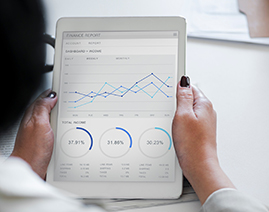
Business failure by overtrading
Remarkable sales figures and improved short-term profits do not necessarily indicate ongoing success...

Challenging The FinTech Funding Gap In Asean To keep The Growth Engine Running
What is the preferred method for FinTechs to raise money? How much capital do FinTechs hope to rais...

Building a personal set of values - the 6 I's
Becoming a successful CFO requires persistence, hard work, technical skills, and people and manageme...

Fixed Cost Management
From the financial perspective, there are two types of cost that management has to deal with –...

Entrepreneurship: The Struggles No One Talks About
Success is all about the money, fame, and glory. That’s the constant message we see on social ...

Boardroom commitment to security
The subject of ‘Board commitment to security’ is a sensitive and often emotive one. The ...

Blockchain for Claim Management in Insurance Industry
Insurance industry has a vast potential for blockchain-driven innovations solving multiple pain poin...

Fraud Detection : Challenges in Real Time Payments
“The financial industry is shifting towards real-time data analysis, deploying technologies su...

Bench to Market
BENCH TO MARKET Some thoughts from an (interested) observer: #1 having the innovator/...
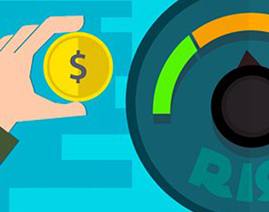
Risk Management Concepts
Risk Management Concepts - a practical approach. History, the Persians and risk management, an ex...

Start Up
Millennials are now the largest segment of the U.S. labor market according to >Pew Research, an...

Granting Credit & KYC
Money cost money. Credit is money. Hence, credit cost money! Credit also carries an element o...

Money in the bank was never more important than it is today
With the current spread of COVID-19 pandemic, the world has got locked down. It is an unfolding even...
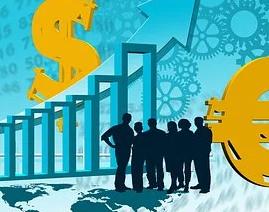
Risk Based Capital- Issues, Challanges and Opportunities
Introduction A Stable insurance sector is encouraging various insurance regulators around the world...
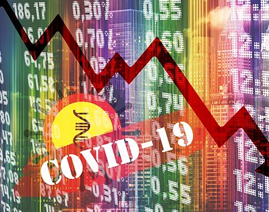
COVID-19: the changing fortunes of industries and how businesses can thrive
With no end to the COVID-19 pandemic in sight, how can businesses build resilience and pivot for fut...

The death of Entrepreneur & Entrepreneurship
What amazed me was that why a person with a Net worth of 25,000 crores (nearly US 3.6 billion) could...
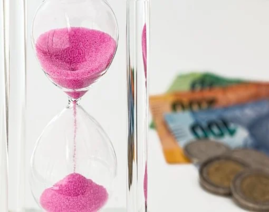
Risk Management 2.0
In today’s VUCA world, Risk Management has been on the CFO’s radar since the global fina...

Managing Conduct Risk in ASEAN and Malaysia - Addressing Drivers, Restoring Trust
There has been no shortage of well-publicized and highly damaging misconduct scandals within the glo...

Defining business problems clearly
I have observed in my years of project delivery, stakeholders are generally quick to jump into solut...

Fraudsters capitalise on COVID19 crisis...
Shiny hunters, a hacking group, allegedly stole personal data, including email, phone numbers, hashe...








Mario Singh
Founder and CEO - Fullerton Markets
A widely sought-after thinker in the business and finance industries, Mario has appeared more than 40 times on international media CNBC and Bloomberg, each time giving his business views to an estimated 350 million viewers worldwide. His three best-selling books are endorsed by global billion-dollar fund managers like Dr. Mark Mobius, Executive Chairman of Templeton Emerging Markets Group and David Kotok, Chairman of Cumberland Advisors.